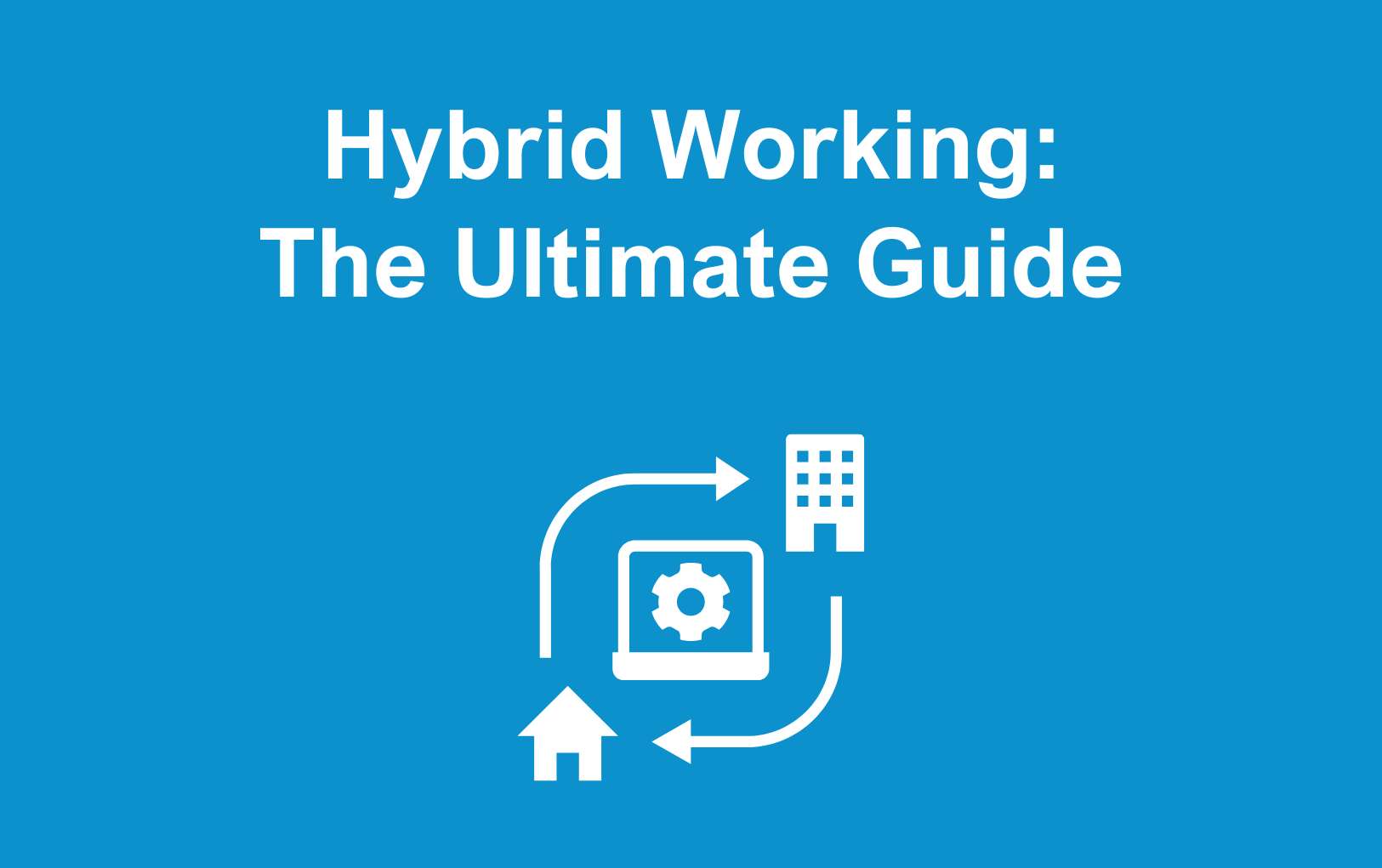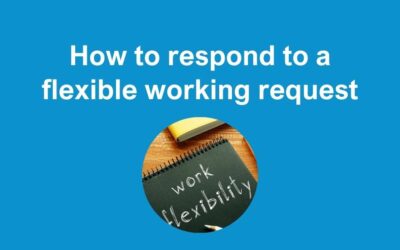Watch our video: Hybrid Working: What’s Working and not Working
Hybrid Working – The Ultimate Guide for Employers and Managers
What is Hybrid Working?
The modern day workplace now requires to have a hybrid working plan in place. Hybrid working is a flexible working arrangement between employer and employee, providing the employee with the opportunity to split their working hours between their home or another place out with their office, and in-office work. Employees can enjoy the benefits of both, and have the freedom and flexibility to work where they please, when they please. This moves us neatly on to our first point of this topic – Flexibility.
A hybrid working agreement provides an employee with a significant amount of flexibility in their working patterns. An employee can find a better balance between their professional and personal responsibilities and can often result in a higher level of job satisfaction and mental wellbeing.
Next up, a hybrid working environment can showcase a company to be modern & forward thinking, which, in-turn, will make a company appear more attractive to work for. This can have a direct positive influence on talent retention & attraction. Here at The HR Booth, we encourage a hybrid working environment as we want our employees to feel valued, comfortable, and trusted. The majority of our employees will work between the office and their home. This has enabled us to attract a higher level of talent to our job vacancies, and also, a wider range of talent. If we did not offer a hybrid working plan, then we would only be able to attract candidates from around and within our office area. However, as we do offer a hybrid working plan, we are able to attract candidates from further afield.
Who remembers the COVID-19 pandemic, feels like a lifetime ago, right? Well the pandemic certainly sped up the adoption of remote work in the workplace, and provided companies the opportunity to test out hybrid working plans. Ultimately, companies had no choice but to offer this, and, in some cases, it has worked out for the better, as companies can now cut office costs – more on that in the next paragraph.
Offices are expensive! But no longer necessary either, as the COVID-19 Pandemic showcased that employees could work from home and that there is not as much of a need for offices as there was before. This was a benefit, particularly, for smaller businesses and provided some flexibility for them. On the other hand, employees would also save money as they wouldn’t have to commute to & from work every day – easy when your desk is 2 metres from your bed!
Employees also found that working from home can increase productivity and efficiency, as they are in comfier surroundings. Employees can focus on tasks easier in their own environment.
How does Hybrid Working work?
Hybrid Working must always be agreed with your employer. It provides the employee with the ability to work from home or from the office, as and when they please. There is now more flexibility with working hours, i.e. 9 – 5 is not necessary anymore, employees can work 8 – 4, 10 – 6, or any other pattern, as long as it is agreed with their employer.
The specific schedule will vary between employees, and will largely depend on employees’ own schedules, preferences and job roles. Nowadays, employers must be flexible in this regard, as it can attribute towards a happier workforce. On the other hand, some employees may opt for a fixed week – to – week schedule, as this can mean that employees can plan their commitments around their work schedule. At The HR Booth, we often have a varied schedule that can change from week – to – week. We have one stipulation (which we believe can greatly benefit employee morale), and this is that all employees should come into the office on a Friday. Obviously, this is sometimes not possible, but it means that this is a commitment to one day a week in the office, that all employees can be together and bond.
Let’s take a look at the benefits of Hybrid Working.
When looking at it from an employer’s point of view, they will have increased talent attraction towards the business, and increased talent retention when in the business. A healthy work-life balance is key to good performance and morale in the workplace.
Employees are also likely to see an increase in productivity levels. Hybrid working can lead to working within a more comfortable environment, and when an employee is comfortable, they’re more likely to work hard (or sleep!).
Lastly, the business will have improved agility and resilience towards challenges, as employees are distributed more evenly. For example, at The HR Booth, we finish at 2pm on a Friday, however one employee stays on till 5pm should any of our clients need assistance. A hybrid working pattern (and a good phone connection) means the employee can do this from home, instead of in the office. Employees are likely to be more willing to do this from home than they would be if it was in the office.
What about from the employees perspective?
Well, they’ll have a better work-life balance, as they can split their time between the office and their home. This is especially important if you are a parent and need to pick your kids up from school.
There will be less stress around commuting to and from work as employees will only have to commute from their bed to their desk (and maybe the toilet somewhere in between!). There will also be a financial saving here.
In addition, employees may be able to focus better. Have you ever tried to work on an important task with a tight deadline in a busy office? It’s not the easiest! By completing this task at home you’ll be working in a quiet environment and more likely to get these tasks done.
However, there are some concerns and misconceptions over Hybrid Working:
One misconception is that technology won’t work. Sometimes this is correct, but more often than not, technology works, and when it works well, it is extremely effective. Software such as Zoom, Microsoft Teams and Microsoft Outlook make communication easier than ever.
Another misconception is that employees may feel lonely working on their own all day. One thing that we do at The HR Booth is have regular check-ins with our working-from-home employees, ensuring they feel valued and part of the business activity.
Planning for Hybrid Working
It’s important that employers assess readiness for Hybrid Working. In other words, will a hybrid work pattern work for my business.
Is my business’ organisational culture good? If the answer is yes, then hybrid working will likely be successful. Hopefully there is elements of trust amongst the workforce that the work will get done – even from home.
Are we able to support our employees remotely? The senior leadership group must be on hand to support with any issues encountered throughout hybrid working. Furthermore, senior leadership must be willing to embrace hybrid working and ready to lead by example.
Listen to your employees! This is an important one, if your employees don’t want hybrid working, then don’t offer it. On the other hand, if the consensus is that your employees will benefit from hybrid working, then it is something you should consider offering.
It is important to have clear policies and guidelines in place for Hybrid Working.
Develop clear policies for hybrid working requests. Ensure that the employee is aware what is expected regarding working hours, availability and communication channels for remote workers.
There should be relevant KPIs for every employee. This is so that employers can measure performance and track whether hybrid working is suitable for that employee. It is important to remember that every employee is different – some may thrive in hybrid working and some may struggle.
Recognise the needs and wants of your employees when providing a hybrid working plan. Flexible working hours, alternative arrangements and on-hand support are all worth considering when implementing a hybrid working plan.
It’s vital you ensure that your remotely working employees have adequate technology to continue their work from home. Employers must provide laptops and, in some cases, phones, to ensure that the employee can complete a seamless transition to hybrid working.
In addition, you must invest in communication software such as Microsoft Outlook and Microsoft Teams, although it is likely that you will already have this in place. Furthermore, software such as WeTransfer or OneDrive will help when transferring documents between each other.
Lastly, as always, it is imperative that you conduct regular reviews to work out whether a hybrid working is right for that employee or not. In these reviews, listen to your employees’ thoughts, look at their performance and make relevant adjustments.
Communication Strategies
Communication is vital to ensuring a smooth transition into a hybrid working pattern. So let’s take a look at what you can do:
Regular (virtual) Check-ins can provide an employee the space to voice their opinion on the hybrid working setup. These meetings can be weekly, bi-weekly or monthly – this should be agreed between employee and line manager. At The HR Booth, our line managers will have weekly check-ins with employees within the business. This regular contact is vital towards good performance.
Collaboration tools such as Microsoft Teams and Zoom enable quick and real-time communication between employees. Microsoft Teams is particularly effective for us at The HR Booth. The Teams ringtone is a common feature in The HR Booth office!
Another important aspect is flexibility within communication methods. Some employees may prefer to communicate differently than others, some may prefer a call, some may prefer a message. It’s all about figuring out each other’s preferences and working from that.
Trust is so important to a positive working relationship. Managers should always lead by example, but even more so when implementing a hybrid working plan. Managers can set a positive tone to the company and reinforce the importance of trust in the workplace culture.
Communicate openly with your team, setting realistic expectations, goals and performance metrics. You should provide regular feedback and guidance to help employees succeed in their roles, and also give them confidence to perform well.
Offer support and resources to help employees succeed in a hybrid working environment. Provide training and development opportunities to help your employees’ professional careers.
Managing Performance
Performance metrics are key to the performance of any employee. With metrics, comes goals and targets. Goals should be specific, measurable, achievable, relevant and time-bound (SMART) – see what we did there?
Communication guidelines such as communication channels, response times and expectations can assist in a smooth remote working relationship. It’s important to remember that employees may be busy and may not reply straight away.
When outlining tasks and deadlines it is important that these are clear and defined. This comes under the umbrella of clear communication and is imperative when sharing a task with someone working remotely. By providing clear instructions it is more likely that the employee will get the task done quicker.
With any working arrangement, challenges will arise at points. It’s how you overcome these challenges that matter. Implement strategies such as regular team meetings and collaborative project management tools to encourage communication and create opportunities for remote and in-office employees.
Encourage employees to set routines, clear priorities, and a dedicated workspace in their home. A remote working arrangement can benefit these traits.
Prioritise Wellbeing
We believe that employee wellbeing should be paramount in your organisational culture. So how can you affect this in a hybrid working setup?
You should encourage your employees to take regular breaks throughout the day, taking time away from the computer. One thing that we found beneficial at The HR Booth is going on walks (weather dependant!). Time away from the desk combined with fresh air can recharge your mind and get you raring to go for the afternoon!
Employee Assistance Programmes are something that all businesses should offer. EAPs provide access to mental health resources to help employees cope with stress, anxiety, amongst other things. Keep an eye on our social media channels for more on this in the future.
Wellness Initiatives such as walking challenges can help boost employee morale in the workplace. Throughout the month of May, we will be doing a steps challenge, with the aim of raising money for charity, encouraging exercise amongst the workforce, and improving employee wellbeing.
It is important to trust your employees – empower them to manage their own schedules, with the trust that they will do the required work. This will also allow them to think independently, providing a sense of control over their working life.
Last but not least, be there for your employees. Whether your senior leadership or in at entry level, it is important that you are on hand to help with any your colleagues may need done. Think of them as your teammates all working towards a collective goal!
Hybrid working represents a modern approach to work, offering flexibility to your employers and empowerment to your employees. Flexible working enables employees to split their time between the office and home. Balancing professional work with personal commitment can create a healthy working environment.
Hybrid working will attract and retain talent and creates a sense of trust amongst the company. Not only this but it can also reduce stress and save costs. Clear communication is vital in keeping remote and in-office employees connected and informed, while building a sense of trust is essential for fostering positive working relationships.
Ultimately, hybrid working offers numerous benefits for both employees and employers, along with careful planning and effective implementation, it can contribute to a more resilient, adaptable and a thriving workplace culture. It is something that all organisations should consider.







